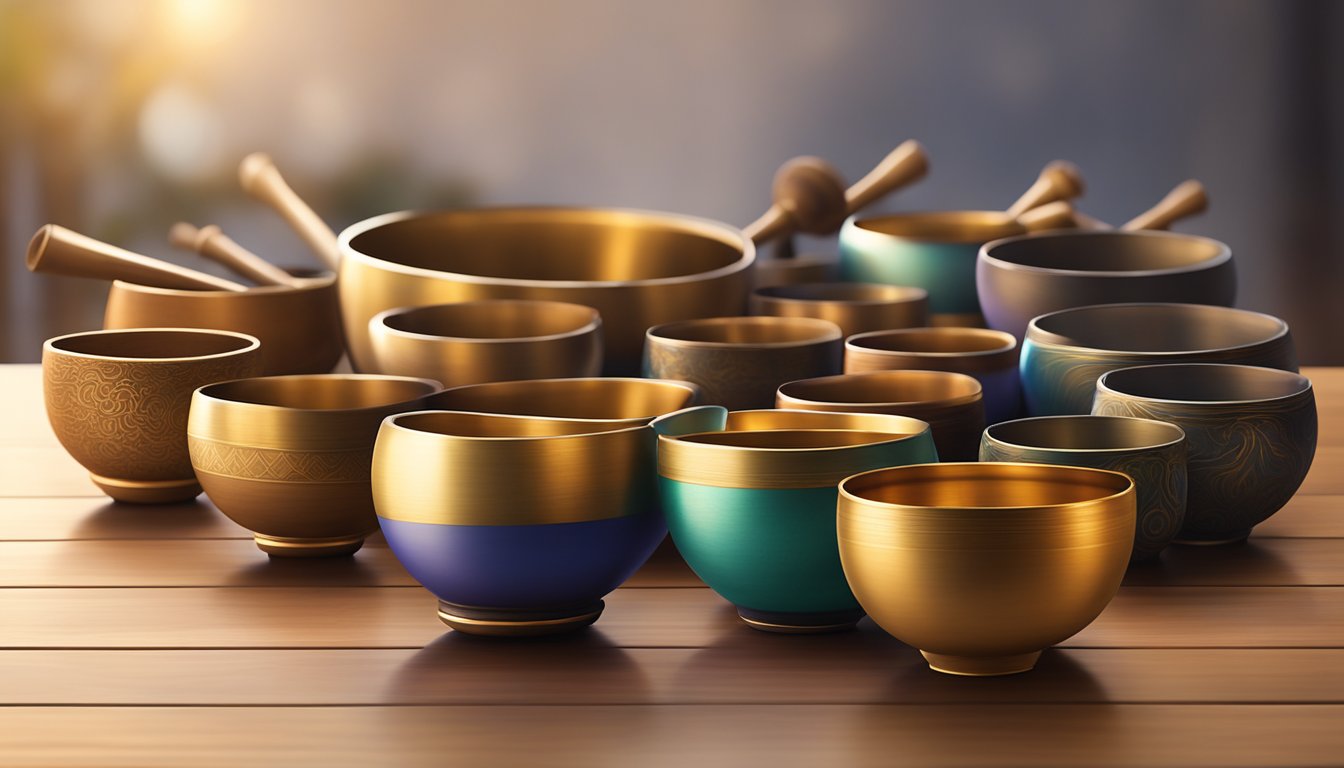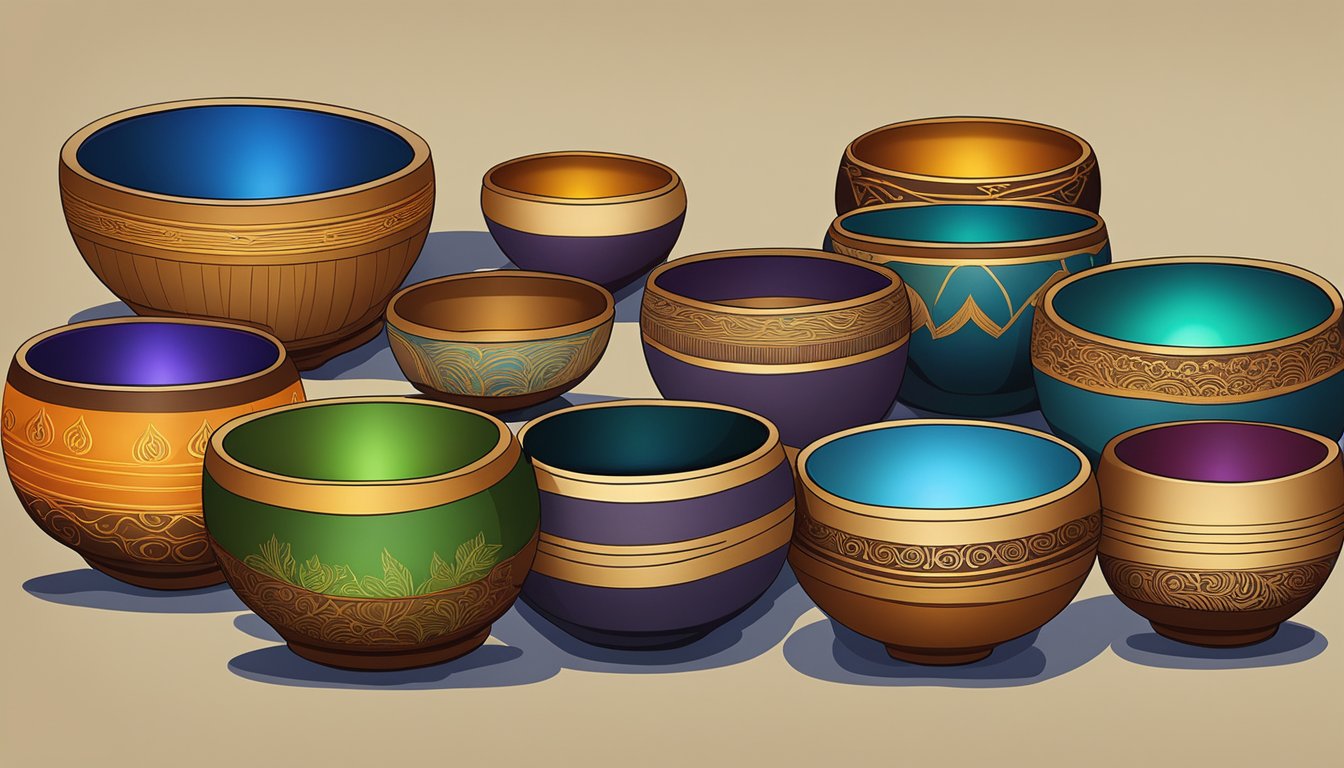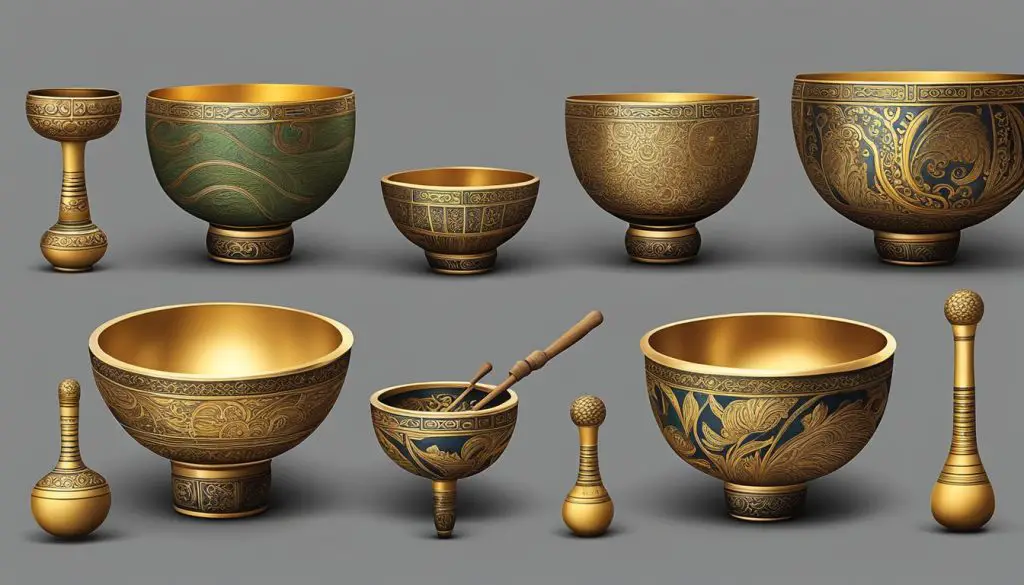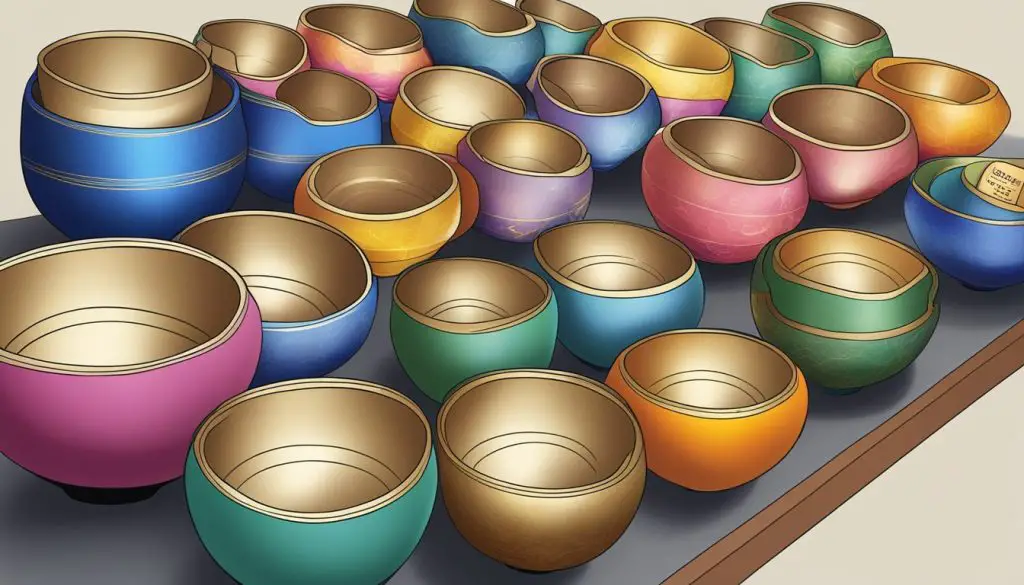How To Choose Which Singing Bowl to Buy: A Guide for Beginners
When it comes to selecting a singing bowl, the options can be overwhelming.
However, with a little bit of knowledge, choosing the right bowl for your needs can be a fun and rewarding process.
As someone who has been using singing bowls for meditation and relaxation for years, I have learned a lot about what to look for when selecting a singing bowl.

Understanding singing bowls is the first step in choosing the right one. These bowls are believed to have originated in the Himalayas and are made from a variety of metals, including copper, brass, and bronze.
They produce a unique sound when struck or played with a mallet, and the vibrations are said to promote relaxation, healing, and focus.
When selecting a singing bowl, it is important to consider the size, shape, quality, and authenticity of the bowl, as well as any specific healing properties associated with it.
Key Takeaways
- Understanding the basics of singing bowls is essential when selecting the right one.
- Size, shape, quality, and authenticity are all important factors to consider.
- Singing bowls can be used for meditation, healing, and relaxation.
Table of Contents
Understanding Singing Bowls

As someone who loves playing and listening to singing bowls, I believe it is important to understand the history, types, and materials of these beautiful instruments.
History and Origin
Singing bowls have been used for centuries in spiritual practices and meditation. Originating from Tibet, Nepal, and India, these bowls were traditionally made from bell metal, a type of bronze alloy. They were used by Buddhist monks for chanting, prayer, and healing.
Different Types of Singing Bowls
Today, there are various types of singing bowls available in the market. Some of the most popular types include:
- Tibetan Singing Bowls: These bowls are made from a mixture of metals like copper, bronze, and silver. They produce a deep, resonant sound and are often used for meditation and healing.
- Crystal Singing Bowls: These bowls are made from pure quartz crystal and produce a clear, high-pitched sound. They are often used for sound therapy and chakra balancing.
Materials and Composition
Singing bowls are generally made from a mixture of metals like iron, copper, bronze, silver, and gold. The composition of the bowl determines its sound and vibration. Different ratios of metals create different tones and pitches.
In addition to metal, singing bowls can also be made from crystal or quartz. Crystal singing bowls produce a clear, pure sound and are often used for sound therapy and meditation.
When choosing a singing bowl, it is important to consider the materials and composition. A high-quality bowl made from the right materials will produce a beautiful, resonant sound that can be used for meditation, healing, and relaxation.
Selecting the Right Size and Shape

When it comes to selecting the right singing bowl, size and shape are two important factors to consider. In this section, I will discuss how to choose the perfect size and shape for your needs.
Size Matters
Singing bowls come in various sizes, ranging from small to large. The size of the bowl determines the pitch and resonance of the sound it produces.
If you are a beginner, I suggest choosing a small singing bowl within a size of 4.5 inches to 6 inches in diameter. This size bowl may not resonate for a long period, but the tone of the bowl will be high.
If you are looking for a bowl with a deeper sound and longer resonance, you may want to consider a larger bowl. The larger the bowl, the deeper the sound it produces. However, larger bowls can be more challenging to play and may require more skill and experience.
Shape and Depth Influence
The shape and depth of a singing bowl can also influence the sound it produces. Some of the most common shapes of singing bowls include Thadobati, Lingam, Mani, Manipuri, and Remuna. Each shape produces a unique sound and resonance.
Thadobati bowls are known for their deep and rich sound, while Lingam bowls are known for their clear and bright sound. Mani bowls produce a smooth and mellow sound, while Manipuri bowls produce a warm and nurturing sound. Remuna bowls produce a bright and clear sound with a long resonance.
Considering Quality and Authenticity

When it comes to buying a singing bowl, quality and authenticity are two important factors that should not be overlooked. Ensuring that you are purchasing a genuine, high-quality singing bowl will not only provide you with a better sound but also a more meaningful experience.
Age and Antiquity
One of the key indicators of a high-quality singing bowl is its age. Older bowls, particularly those that are considered antique, are often of a higher quality than newer bowls.
This is because they were typically made by skilled craftsmen using traditional methods, resulting in a more authentic and unique sound.
Handmade vs Machine-Made
Another important factor to consider is whether the bowl is handmade or machine-made.
Handmade bowls are generally considered to be of a higher quality as they are crafted by skilled artisans who take great care in creating each bowl. Machine-made bowls, on the other hand, are often mass-produced and lack the same level of detail and authenticity.
Identifying Authentic Singing Bowls
When it comes to identifying authentic singing bowls, there are a few things to look out for.
Firstly, check the bowl for any markings or inscriptions, as these can provide clues as to its origin and authenticity.
Additionally, look for bowls that have a clear, resonant sound and a smooth, even finish. Jambati, Naga, and Thadobati bowls are all examples of high-quality singing bowls that are known for their unique sound and craftsmanship.
Chakras and Healing Properties

Chakra Correspondence
When choosing the right singing bowl, it is important to consider the chakra correspondence. Each chakra is associated with a specific note, and the vibrations produced by the singing bowl can help to balance and align the chakras.
For example, the root chakra is associated with the note C, while the sacral chakra is associated with the note D. The solar plexus chakra is associated with the note E, and the heart chakra is associated with the note F. The throat chakra is associated with the note G, while the third eye chakra is associated with the note A. Finally, the crown chakra is associated with the note B.
By choosing a singing bowl that corresponds to the chakra you wish to balance, you can help to promote healing and harmony within your body.
Healing and Meditation Benefits
Singing bowls are known for their healing and meditation benefits. The vibrations produced by the singing bowl can help to calm the mind, relax the body and promote a sense of peace and tranquillity.
When used during meditation, singing bowls can help to deepen your practice and promote a greater sense of spiritual connection.
The vibrations produced by the singing bowl can help to clear blockages within the chakras, promoting healing and balance within the body.
Singing bowls can also be used to alleviate stress and pain. The vibrations produced by the singing bowl can help to reduce tension within the body, promoting relaxation and a greater sense of well-being.
Practical Considerations and Accessories

How to Play Your Singing Bowl
Playing a singing bowl is a simple process that requires some practice to master. You should place your singing bowl on a flat surface, preferably a cushion or a mat, to avoid any vibrations.
Hold the bowl with one hand and use the other hand to strike the bowl with a wooden mallet. The rim of the bowl can also be used to produce a beautiful sound. To do this, you should hold the mallet firmly and gently rub it against the rim of the bowl in a circular motion.
Mallets and Strikers
The type of mallet or striker you use can affect the sound of your singing bowl.
Wooden mallets are the most common type of mallet used to play singing bowls. They produce a warm and rich sound. If you want a brighter sound, you can use a felt mallet.
Strikers are also used to play singing bowls. They are usually made of wood or leather and produce a sharp and clear sound.
Caring for Your Singing Bowl
Singing bowls are delicate instruments that require proper care to maintain their quality. When not in use, store your singing bowl in a dry and cool place. Avoid exposing it to direct sunlight or extreme temperatures.
You can clean your singing bowl using a soft cloth and warm water. Avoid using harsh chemicals or abrasive materials that can damage the bowl’s surface.
Frequently Asked Questions

How do I choose the right singing bowl for my needs?
Choosing the right singing bowl is a personal decision that depends on your preferences and needs. Consider the size, material, and sound of the bowl.
If you are looking for a bowl for meditation or relaxation, you may want to choose a larger bowl with a deeper tone.
If you are looking for a bowl to use in a sound bath or for therapeutic purposes, you may want to choose a smaller bowl with a higher tone.
Experiment with different bowls and listen to your intuition to find the one that resonates with you.
What should beginners look for in a crystal singing bowl?
If you are a beginner, start with a smaller bowl with a diameter of 4.5 to 6 inches. This size bowl is easier to handle and produces a higher tone that is easier to hear.
Look for a bowl made of high-quality crystal with a clear and consistent tone. You may also want to consider the design and aesthetics of the bowl, as this can enhance your experience.
How can I tell if a singing bowl is authentic?
Authentic singing bowls are made of high-quality materials and produce a clear and consistent tone.
Look for bowls made of crystal or metal, and avoid bowls made of plastic or other synthetic materials. Authentic bowls may also have unique markings or engravings that indicate their origin or history.
When purchasing a singing bowl, it is important to buy from a reputable seller who can provide information about the bowl’s origin and quality.
How do I determine which chakra my singing bowl corresponds to?
Singing bowls are often associated with the chakras, or energy centers, of the body. The tone and vibration of the bowl can correspond to different chakras depending on its size and frequency.
For example, a larger bowl with a deeper tone may correspond to the root chakra, while a smaller bowl with a higher tone may correspond to the crown chakra.
Experiment with different bowls and listen to your intuition to determine which chakra each bowl resonates with.
Where can I find a high-quality singing bowl near me?
High-quality singing bowls can be found at specialty stores, online retailers, and at spiritual or holistic fairs.
Look for a store or seller who specializes in singing bowls and can provide information about the origin and quality of each bowl.
You may also want to read reviews and ask for recommendations from friends or spiritual practitioners.






